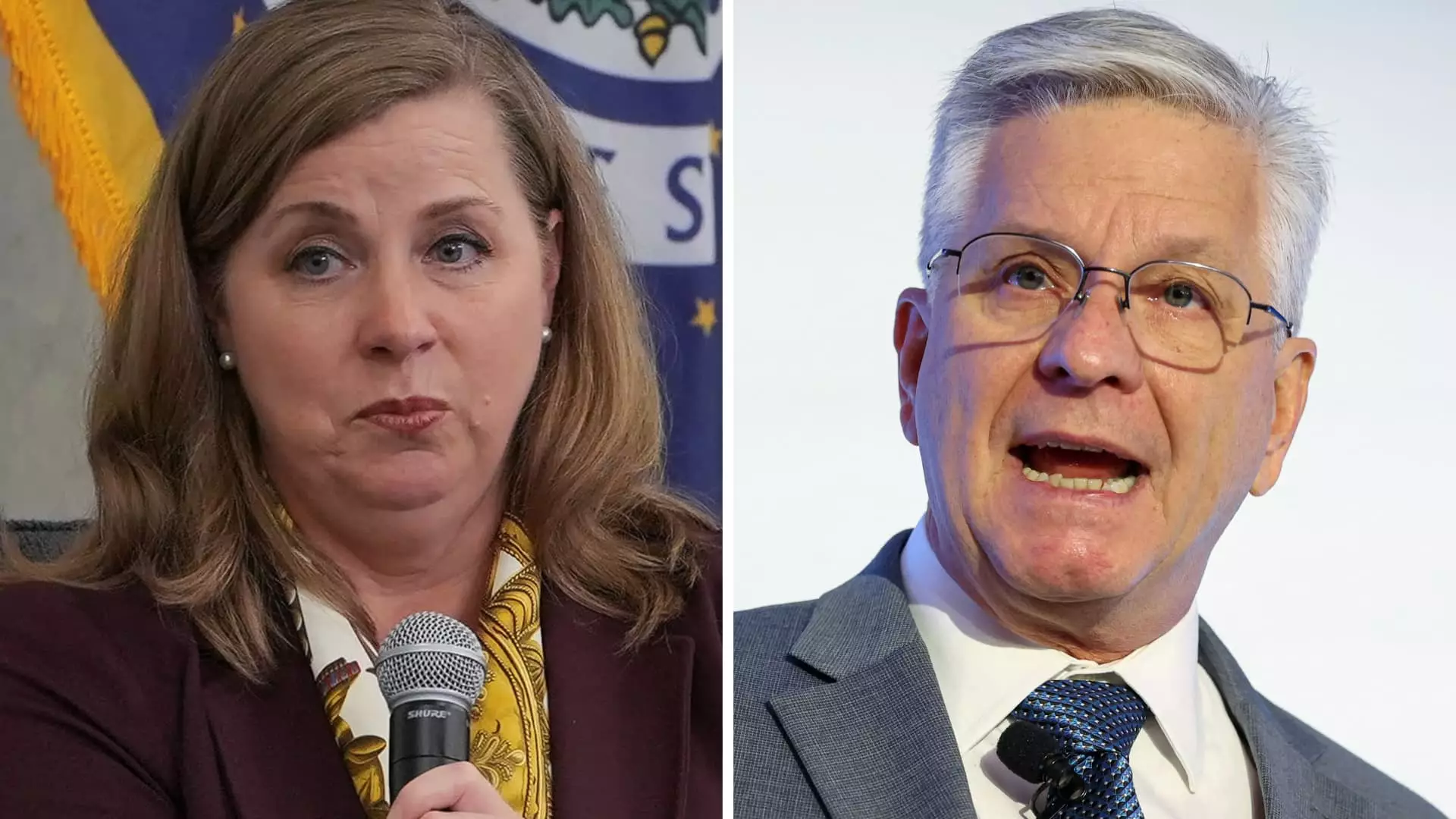In the contemporary economic landscape, the Federal Reserve stands at a critical crossroads, yet it appears reluctant to act decisively. For months, the central bank has maintained an unchanged interest rate, despite mounting evidence that the economy faces increasing risks. This hesitance is not just a matter of cautious policymaking; it’s a dangerous form of economic complacency that threatens to undermine long-term stability. Two influential Fed officials recently voiced dissent, signaling a deep concern that the waiting game risks neglecting the real vulnerabilities of the labor market and inflation dynamics. Their stance underscores a broader issue: the peril of stubborn inaction in the face of clear economic signals.
The central argument for cautious inaction hinges on the belief that tariffs and trade tensions are merely temporary shocks. This perspective, however, neglects the historical tendency of such measures to evolve into more persistent problems, altering inflation’s trajectory and disrupting employment. By insisting on patience, policymakers might unwittingly be setting the stage for a more severe economic correction down the line. Instead of embracing a gradual, data-driven easing, the Fed’s current stance reflects a dangerous fidelity to the status quo—a passivity that could result in falling behind the economic curve and exacerbating future instability.
Myopic Political Influences and Their Impact on Monetary Policy
The tension between the Federal Reserve’s independent judgment and external political pressures cannot be understated. President Trump’s aggressive call for substantial rate cuts clearly demonstrates how political figures often prioritize immediate relief over prudent policymaking. While central banks must balance multiple considerations, succumbing to such overt political pressure risks politicizing what should remain a balanced, technical decision-making process.
This episode exposes a fundamental flaw: when political figures publicly demonize the Fed’s cautious approach, it undermines the institution’s credibility and complicates its ability to make objective decisions. Yet, mutual independence remains vital for a resilient economy. The Fed’s cautious approach might be misunderstood as indecisiveness, but in reality, it reflects a thoughtful weighing of evidence. The danger lies in allowing partisan narratives to push central bank policies into reactive and potentially harmful directions, rather than fostering a climate where expert judgment is respected and trusted.
The Risks of Overreaction vs. Underestimation
Choosing to delay easing monetary policy isn’t without risk. Maintaining high interest rates in a slowing economy can further suppress growth and intensify labor market pressures. Conversely, aggressive rate reductions could ignite inflation or create asset bubbles, exacerbating inequality and financial instability. Herein lies the fundamental dilemma: the central bank must navigate a narrow path, balancing moderation with timeliness.
The dissenting voices, represented by Waller and Bowman, argue convincingly for gradual policies rooted in economic realities. Their stance reflects an understanding that inflationary pressures caused by tariffs are likely short-lived, and that the economy’s latent fragility warrants preemptive easing. Their perspective champions responsible policymaking—measured, flexible, and adaptable—rather than reactive and dogmatic. Such prudence is essential in safeguarding the labor market, which remains vulnerable amidst global uncertainties and internal policy tensions.
The Dangers of Policy Delays in a Shifting Global Economy
The global economy today is characterized by unprecedented volatility—trade tensions, geopolitical conflicts, and rapid technological changes. Under these conditions, maintaining the status quo is a gamble with high stakes. The Fed’s paralysis risks catalyzing a recession, intensifying unemployment, and diminishing the bargaining power of workers. The labor market’s resilience shouldn’t be taken for granted; it is a delicate ecosystem that requires proactive and not stagnant stewardship.
Furthermore, the political environment has heightened sensitivities around economic management. While some policymakers advocate for aggressive cuts to placate political wishes, this approach often overlooks the long-term health of the economy. Responsible central banking involves acknowledging uncertainties and making calibrated moves rather than succumbing to populist impulses. The dissent from Waller and Bowman is a reminder that a cautious, steady approach—guided by data and economic expertise—is more likely to produce sustainable growth and stability in the long run.
This prolonged hesitation by the Federal Reserve isn’t just a minor misstep; it embodies a dangerous disconnect between economic theory and political reality. Ignoring signals of a fragile labor market, underestimating the fleeting impact of tariffs on inflation, and bowing to political pressures threaten to undermine the stability of the American economy. In the arena of monetary policy, inaction is often a form of tacit consent to future turmoil. It’s time for the Fed to acknowledge that fairness, transparency, and an unwavering commitment to economic prudence are indispensable for navigating today’s turbulent waters. The risk of falling behind, of allowing short-term political gains to overshadow long-term prosperity, is a gamble that could prove catastrophic.

